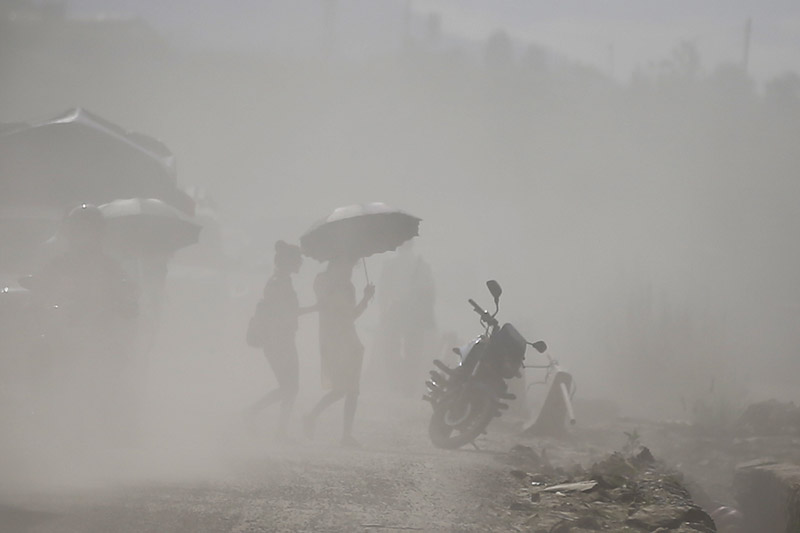Govt to establish robust mechanism to monitor air pollution
The action plan envisions compensation mechanisms for victims of air pollution
Kathmandu, March 15
The government is set to establish monitoring and information dissemination mechanism on air quality of Kathmandu valley.
As per the Kathmandu Valley Air Quality Management Action Plan-2020, Department of Environment will establish mercury and wet deposition monitoring system in the valley within two years.
Ministry of Forests and Environment, Ministry of Industry, Tourism, Forests and Environment of Bagmati Province and local levels will support the Department of Environment towards that end. Wet deposition is monitored to find pathway to pollutant removal from the atmosphere, giving further insights on chemical composition of precipitation.
Harmful and hazardous pollutants like benzin and polyaromatic hydrocarbons will also be measured in the laboratory of the department and in private laboratories.
The government will ensure quality control and assurance of data received from air quality monitoring station.
“The Department of Environment will place display boards in all provinces, including the valley to disseminate information on air quality to public.
A campaign will be launched to monitor pollution in and around industries and construction sites, besides providing results of air quality measurement through social media,” reads the action plan recently issued by the government.
The department, in association with media houses, will publish information on air quality in newspapers besides publishing annual report.
According to the action plan, emission inventory will be developed to analyse air quality and prepare remediation plans. The emission inventory will be used to track actual emission of each facility and to determine type and quantity of pollutants being emitted to the atmosphere. The data will then used to calculate emission fee for each facility.
“Database of plants, boilers and industries will be developed within two years. The department will carry out activities related to emission field mapping, source apportionment and modelling, with the support of universities, research institutions and international organisations on yearly basis,” it reads. The government will work in coordination with health facilities, especially teaching hospitals, to study impacts of air pollution on human health. The National Health Research Council has been assigned to establish a database of diseases caused by air pollution in the valley.
The action plan requires the local levels to mobilise volunteers to implement the ban on open burning of refuse.
Local levels and Department of Roads will deploy broomer machines to make the valley roads dust free. It has also envisioned various mechanisms to make pollutants provide compensation to the victims of pollution. Pollution tax would be enforced in accordance with the existing Financial Act. “Progressive tax will be charged on the renewal of vehicles being operated for more than 10 years.
The government will formulate a guideline for optimum utilisation of Environment Protection Fund as specified in the Environment Protection Act,” it reads.
The action plan stipulates a 14-member high-level coordination committee headed by minister of forests and environment to maintain coordination with its implementing and supporting agencies.
There will be a 15-member action plan implementation committee led by a secretary at Ministry of Forests and Environment. World Health Organisation considers air unsafe when average exposure to fine particulate matter exceeds 10 per cubic metre (µg/m3).






